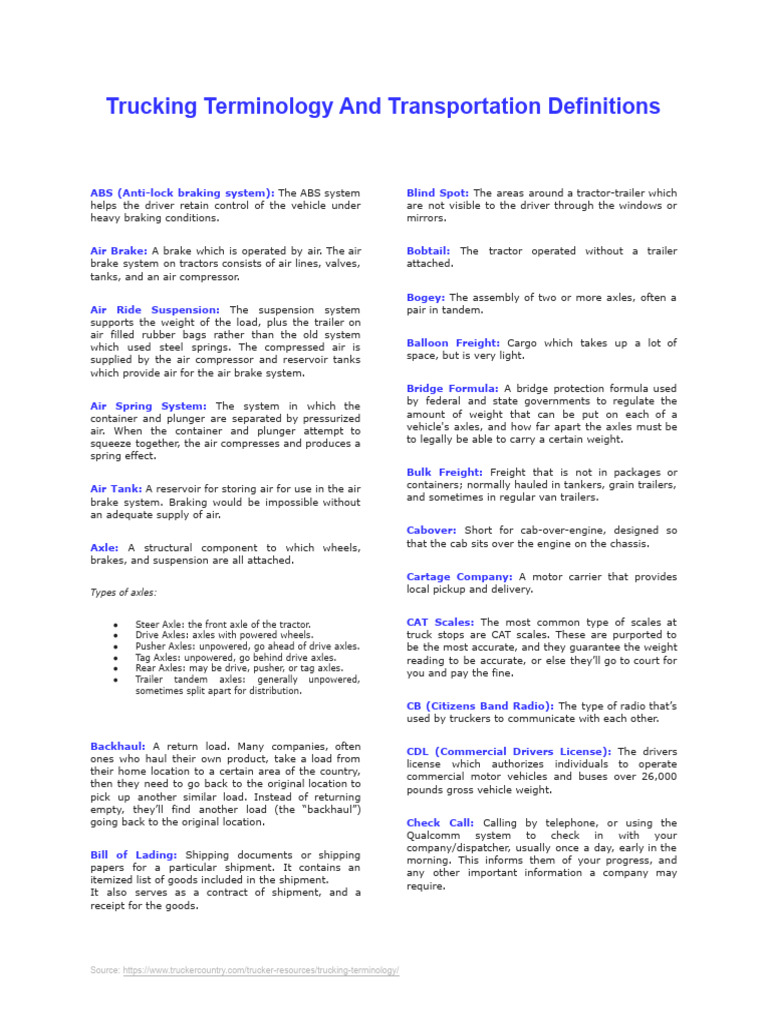When it comes to the trucking industry, understanding the terminology is crucial for both novice and seasoned professionals. Among the many esoteric terms that permeate this field, “half ton” prominently stands out. This term, although seemingly straightforward, can lead to confusion, particularly for those unacquainted with trucking lexicon. But what exactly does “half ton” signify, and why is it an essential concept in trucking rental and freight shipping?
The term “half ton” originated from the classification of pickup trucks and refers to the payload capacity—essentially, the amount of weight a vehicle can carry. However, the implications of this term extend far beyond mere figures. In the trucking world, a half ton refers not only to the truck’s weight capability but also acts as a point of reference for understanding vehicle classification and hauling needs.
First, let’s dissect what is encompassed in the phrase “half ton.” Traditional wisdom might lead one to believe that a half-ton truck can only carry 1,000 pounds. However, this isn’t entirely accurate. Manufacturers often design these vehicles to support payloads that far exceed their nominal classification. For instance, a half-ton pickup can typically bear a weight between 1,200 and 2,000 pounds, depending on the make and model. Such discrepancies arise from various engineering considerations, including the type of bed, suspension, and drivetrain present in the vehicle.
In practical terms, understanding the limits of a half-ton vehicle is vital for compliance and safety in the trucking industry. Overloading a truck can lead to severe consequences—ranging from mechanical failures and accidents to hefty fines imposed by regulatory bodies. Therefore, ensuring that one comprehends the true weight capacity is not merely an academic exercise; it is a requisite for operational efficacy.
Once the concept of “half ton” is firmly grasped, it is pivotal to explore how this capacity aligns with other classifications. Trucking terminology is punctuated by tiers: half-ton, three-quarter ton, and one-ton trucks, each catering to varying levels of payload demands. A three-quarter-ton truck typically boasts a carrying capacity nearing 2,000 to 3,000 pounds, while one-ton trucks can haul loads exceeding 3,000 pounds. These distinctions are especially important for those considering the logistics of freight-trucking, as knowing which class of vehicle to employ can maximize operational efficiency.
Moreover, with the advent of advancements in technology, the definitions of these terms are continually evolving. For a long time, the “ton” promised a fixed guideline for categorization. However, as vehicle construction has improved—thanks to innovative materials and engineering practices—payload expectations have dramatically shifted. A half-ton truck today may function equivalently to what was once considered a three-quarter-ton truck decades ago.
Curiously, this evolution ignites a broader conversation about the environmental implications and cost-effectiveness of using a half-ton vehicle. Often touted for being more fuel-efficient than their heavier counterparts, half-ton trucks appeal to those conscious of operational costs as well as their carbon footprint. The balance between environmental responsibility and adherence to regulations adds yet another layer of complexity to the narratives surrounding truck usage.
Nevertheless, whether discussing a half-ton vehicle’s capabilities or its environmental footprint, one must also remember the importance of maintaining a robust understanding of the entire trucking ecosystem. For instance, terminology related to freight shipping, such as “dead weight,” “load factor,” and “payload management,” all connect back into the operational efficiency of any vehicle, including half-ton trucks. Familiarity with these terms not only bolsters communication among industry stakeholders but also enhances strategic decision-making concerning cargo management.
This interconnected web of information emphasizes the need for curiosity within the industry—companies and individuals alike should endeavor to upgrade their understanding of current regulations, terminology, and innovative practices. Considering the sheer volume of cargo transported daily around the globe, knowledge doesn’t just empower stakeholders; it literally influences the weight of decisions.
Furthermore, the trucking language serves as a barrier, sometimes inadvertently, that can demystify the otherwise cumbersome world of logistics. The term “half ton” may appear elementary, but the nuanced implications ripple through everything from consumer education to regulatory compliance. Newcomers to the field must not shy away from asking questions or seeking clarity; the only foolish question is the one that remains unposed.
In summary, grasping the concept of “how much is a half ton” opens a dialogue filled with rich potential for insight and learning. Recognizing not only the weight capacity but also its place within wider classifications transforms this seemingly simple term into a cornerstone of trucking terminology. As the industry grows and evolves, so too does the lexicon bearing its fruits. Therefore, engaging with this terminology yields benefits that extend far beyond the confines of simple weights and measures, fostering a more informed, capable, and responsible trucking community.
So, the next time you ponder the phrase “half ton,” remember it encompasses more than just a number. It serves as a gateway into the rich, profound intricacies of the trucking industry—an invitation to dive deeper into a world of opportunity and knowledge.
